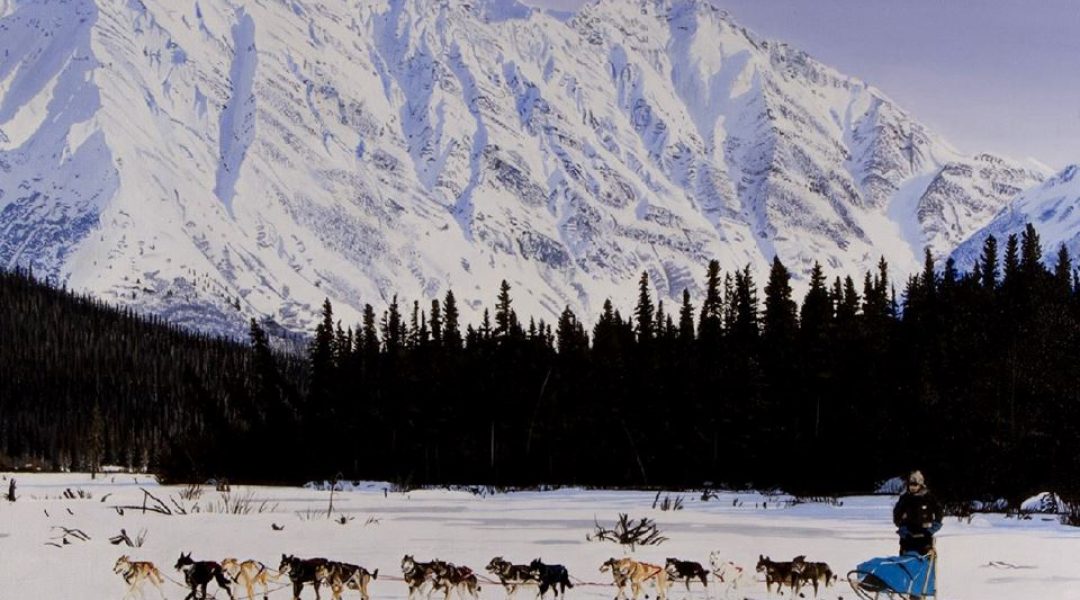This Athabascan artist lives, works, creates — and once upon a time mushed — in Alaska’s Iditarod country.
She was the first Native American woman to compete in the Iditarod and finish the famously grueling race. She’s also a prolific artist who paints the life she lives in Alaska. Rose Albert knows bush Alaska and exactly how to get its wildlife and landscape — and the Last Great Race that sled-dogs across it — onto canvas.
A Koyukon Athabascan, Albert was born on a houseboat along the Nowitna River (it flows into the Yukon River and gives her Anchorage studio its name) and was raised about 40 miles downriver in Ruby, Alaska. Once a supply point for the gold miners in the 1900s, the village of Ruby now marks the halfway point on the northern route for the Iditarod, the legendary test of human and canine mettle that traverses the countryside from Anchorage to Nome in early March to commemorate the lifesaving 1925 serum run to Nome. That “Great Race of Mercy” transported diphtheria antitoxin by dog sled relay across the U.S. territory of Alaska.
Albert can’t remember a time when sled dogs weren’t a part of her life. They were a necessity in bush Alaska, and when she was growing up, her family depended on them. She also can hardly remember a time when she wasn’t doing some kind of art. “My first drawings were of angels at age 5. At age 7, they were horses from pictures from books,” she says. “I did my first oil painting, of Adam and Eve, at age 14. The next one was of a bull moose and cow moose in the woods.”
After high school, Albert joined her siblings on the trap-line and would spend her time painting and driving dogs up the creek. She also worked the Trans-Alaska Pipeline and fought fires for the Bureau of Land Management
In the early 1980s, Albert reached two milestones: She earned an associate of fine arts degree from the Institute of American Indian Arts in Santa Fe in 1981. The following year, she became the first Alaska Native woman to run the Iditarod, the event’s ninth. (That story is briefly recounted, with photos, in the book The Iditarod: The First Ten Years.) The experience so inspired Albert that she began painting her memories of the race, and she continues to paint scenes of the Iditarod every year before the start of the 9- to 15-day race.
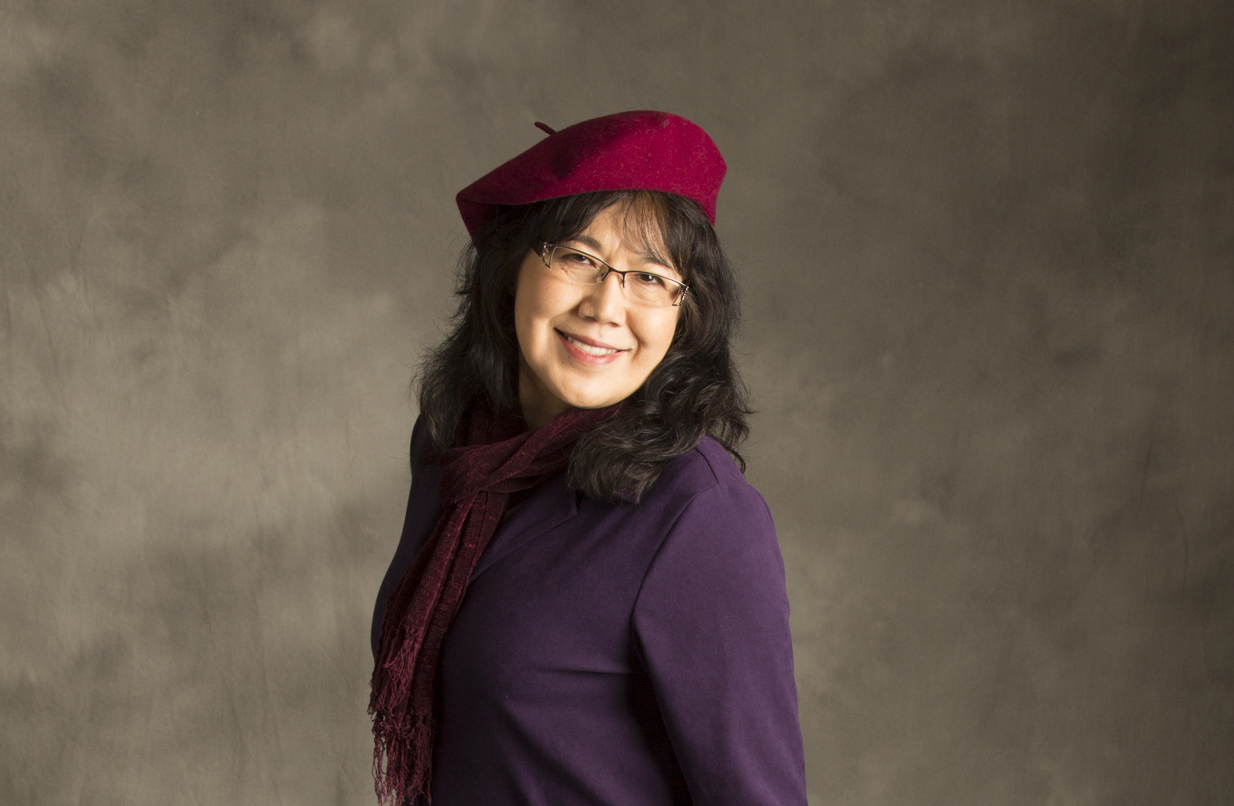
“[Her] rich northern colors capture the vastness and magnificence of the Alaskan wilderness,” reads her LinkedIn page. “Her canvases bring the dogs and the mushers to life, whether running or resting at rustic checkpoints.” Looking at her light-imbued paintings and dreaming of the remote Alaska wilderness they evoke, we couldn’t agree more.
C&I talked with Albert from her Nowitna River Studios in Anchorage. She was hard at work on her Iditarod painting for 2016 (the race begins March 5). While she was zealously keeping it under wraps, she did reveal that it depicted “two racers driving their team up around Unalakleet,” and that it was already sold. (Since we’ve published this story online, Albert has completed the 2016 painting, “Two teams on the Outskirts of Unalakleet.” It’s below.)
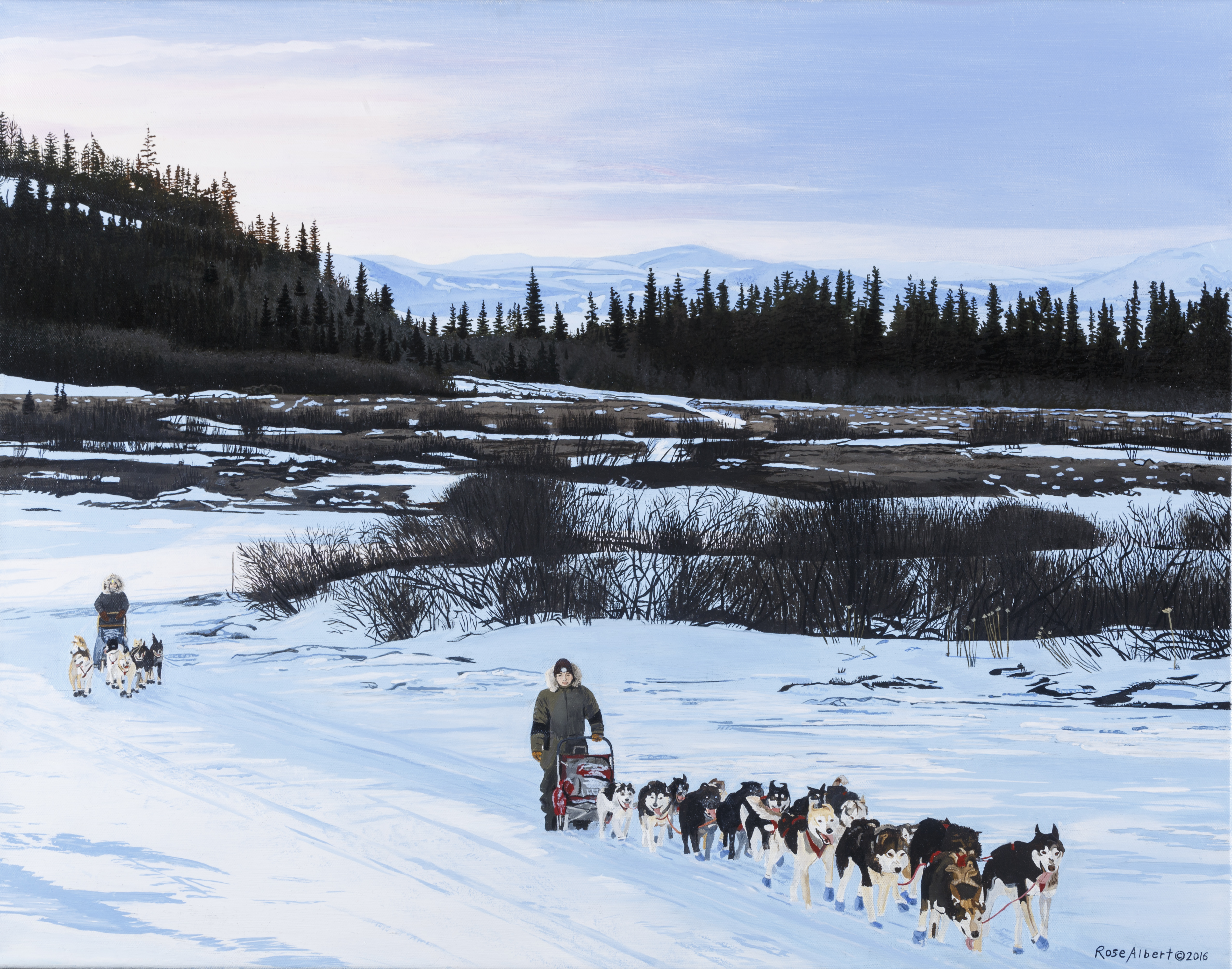
When race fever dies down, Albert will be back to carving and painting ravens, eagles, caribou, moose, totemic imagery, and Iditarod racers and their teams on her popular Alaska yellow cedar boxes, and making jewelry out of moose antler, semiprecious stones, rare beads, and crystals. And of course she’ll be painting her beloved Alaska — and listening to country music while she does.
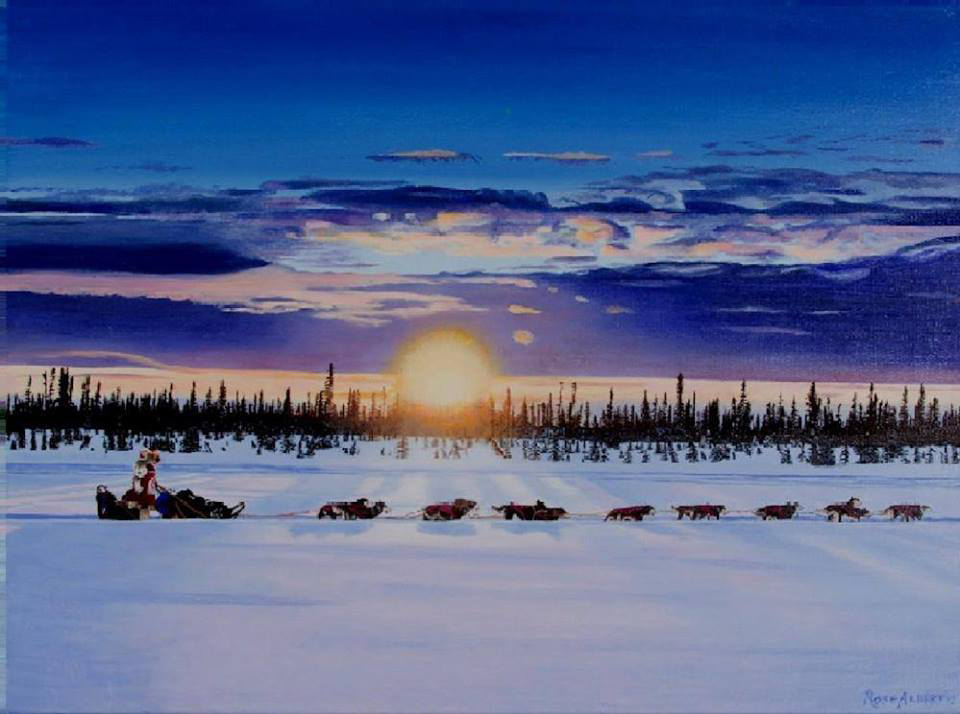
Cowboys & Indians: You’re the first Native American woman to have completed the Iditarod. What was the hardest thing about the race for you?
Rose Albert: Raising money for the race and training was the hardest part. I used my late brother Howard’s dogs. They were young strong trap-line dogs — a husky breed. I only had five months to train and they were only used to my brother commanding them. I fed them every day and took them on training runs every chance I got, so it helped somewhat to bond with them. But they were so strong they were hard to handle. For example, when I said “whoa” while blasting down a hill, they would pick up speed and cause me to tip over or something, sometimes losing the whole team to the trail.
C&I: How did you train for it?
Albert: Training was extremely hard. I could not help running into a few trees, breaking up my birch sleds that my father built for us. I almost gave up when I first broke up a sled until my father told me you can’t just give up — you have to get back up and try again. What he said has stayed with me to this day.
C&I: Have you ever wanted to or tried to run it again?
Albert: I have wanted to but walked away from my chance in 1984 a year after my brother Howard passed away. I wasn’t married yet, so it was too hard to try to raise the dogs and train them on my own. I moved from Ruby to Anchorage and tried to raise money and lease teams from other Iditarod veterans over about 20 years, but it did not come together. I lost all interest in ever running again in 2000 after my mother died and I was having marital problems.
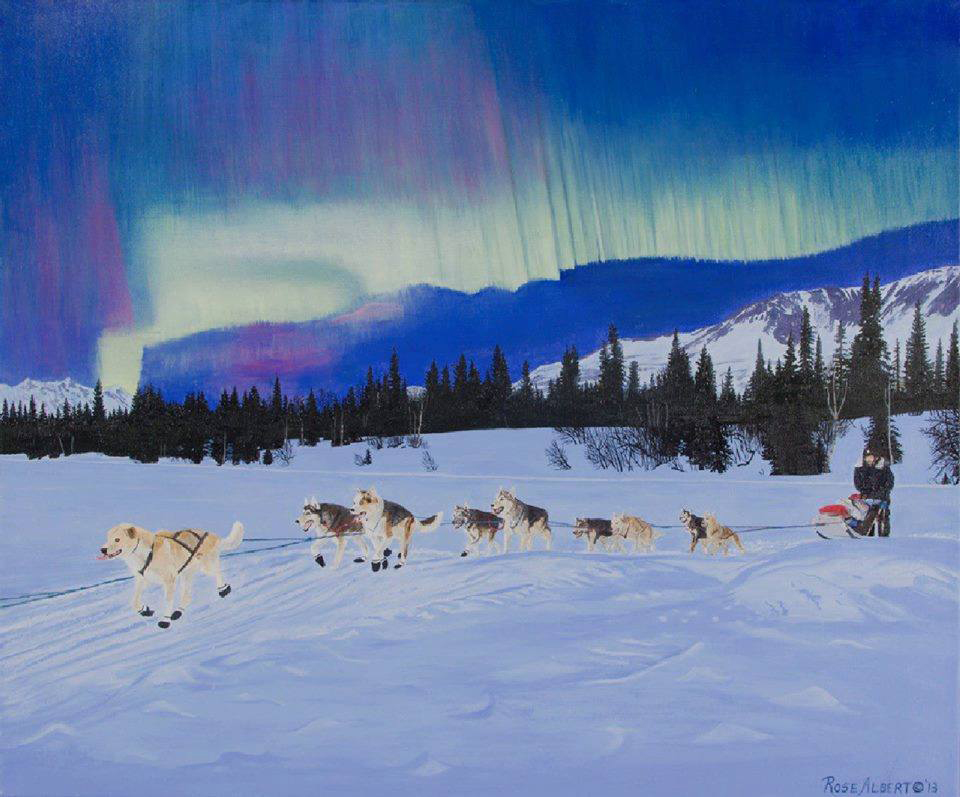
C&I: But you haven’t lost interest in painting the race. How many Iditarod paintings do you suppose you’ve done over the years?
Albert: I have no clue. I only started having them professionally photographed nine years ago.
C&I: How do you decide what aspect of the race you’ll paint?
Albert: Like some other artists, it comes to me in a dream. I keep that image alive by painting it. Also since you hardly see Native American men in the Iditarod race anymore when they used to dominate the earlier races, I paint Native racers more than others or women racers that inspire me.
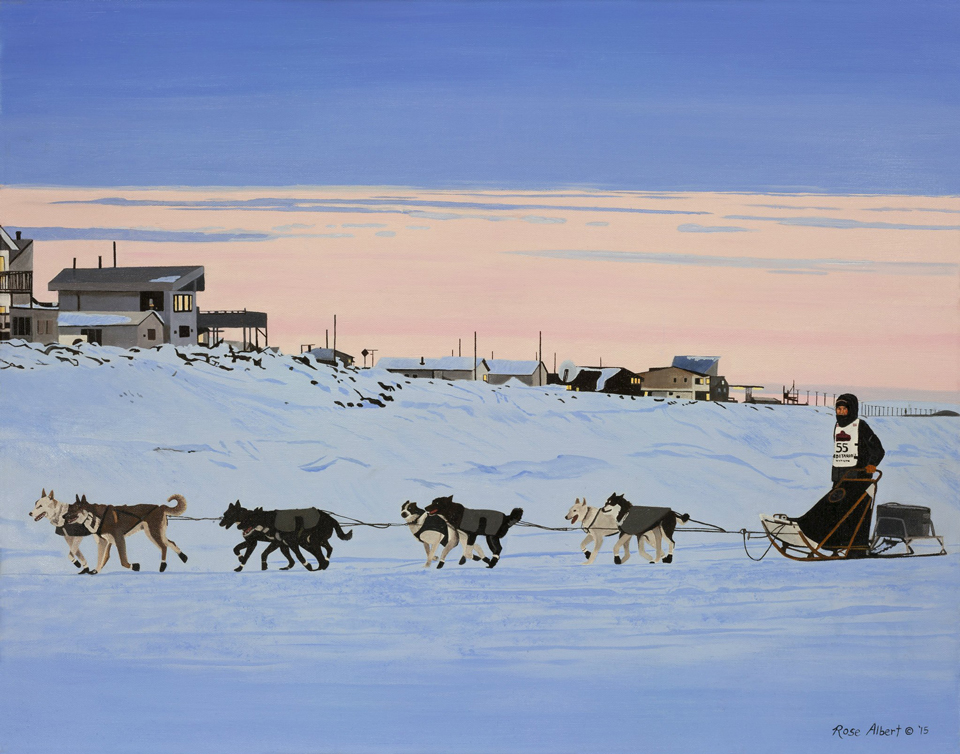
C&I: Tell me about growing up with sled dogs.
Albert: I am Athabascan. We always had working husky dogs. We lived out in the country up the Nowitna River that flows into the Yukon River, also Kokrines or Ruby. Dad took our dogs with him when he went hunting or hauling wood or water. My late brother had a natural knack for raising and training dogs and started out as a young teen building up his kennel. He raced four times, placing seventh twice and 16th twice. I used to raise money for him and would give him money when I worked up on the Trans-Alaska pipeline. That is why he let me use his dogs in 1982.
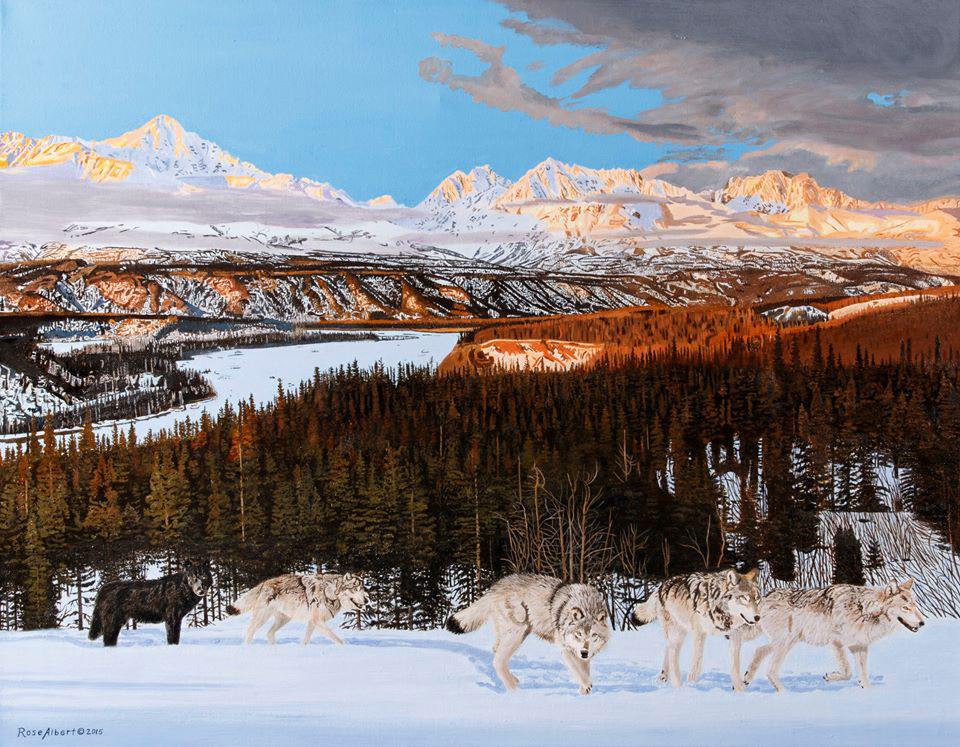
C&I: What are some things you’d like people to know about the Athabaskan culture?
Albert: Our culture stays strong by respecting and listening to our elders. Koyukon Athabascan is what I am, and we are all hardworking people. Living off the land and staying away from processed food is what makes us strong and keeps us healthy. Many Athabascan men are athletic, strong, and good-looking. The women are among the most beautiful women up here in Alaska. But don’t let their good looks fool you — [the women have] a right hook as strong as any man.
C&I: Wildlife is a part of Athabascan culture. Did you miss the bush when you were in the lower 48?
Albert: I grew up out there where there is a lot of wildlife. I love wildlife and used to wish they were my friends. However, when I was going to school in Santa Fe, New Mexico, at the Institute of American Indian Arts from 1978 to 1982, I was homesick and all I did was obsess about getting in the Iditarod. I painted more than one Iditarod painting or of a dog team out in the boonies somewhere in Alaska. I partied a lot, too, so I thought, Well, I better graduate and go back to Alaska so that I can get in the Iditarod. [Laughs.]
C&I: What else you would like to tell the readers of C&I?
Albert: You are given one life by God, so follow your dreams no matter how hard it is. Once you get married and start your family, your kids will always have to come first. Live life to its fullest just as God intended for you to. Once your career gets off the ground, put all you’ve got into what you do with precision, because what you do is who you are. You are setting an example for the younger generation and you don’t want to mislead them. Watch what you do and watch what you say — there are always consequences. Love one another and love Christ.
Below is new late 2016 work by Rose Albert:
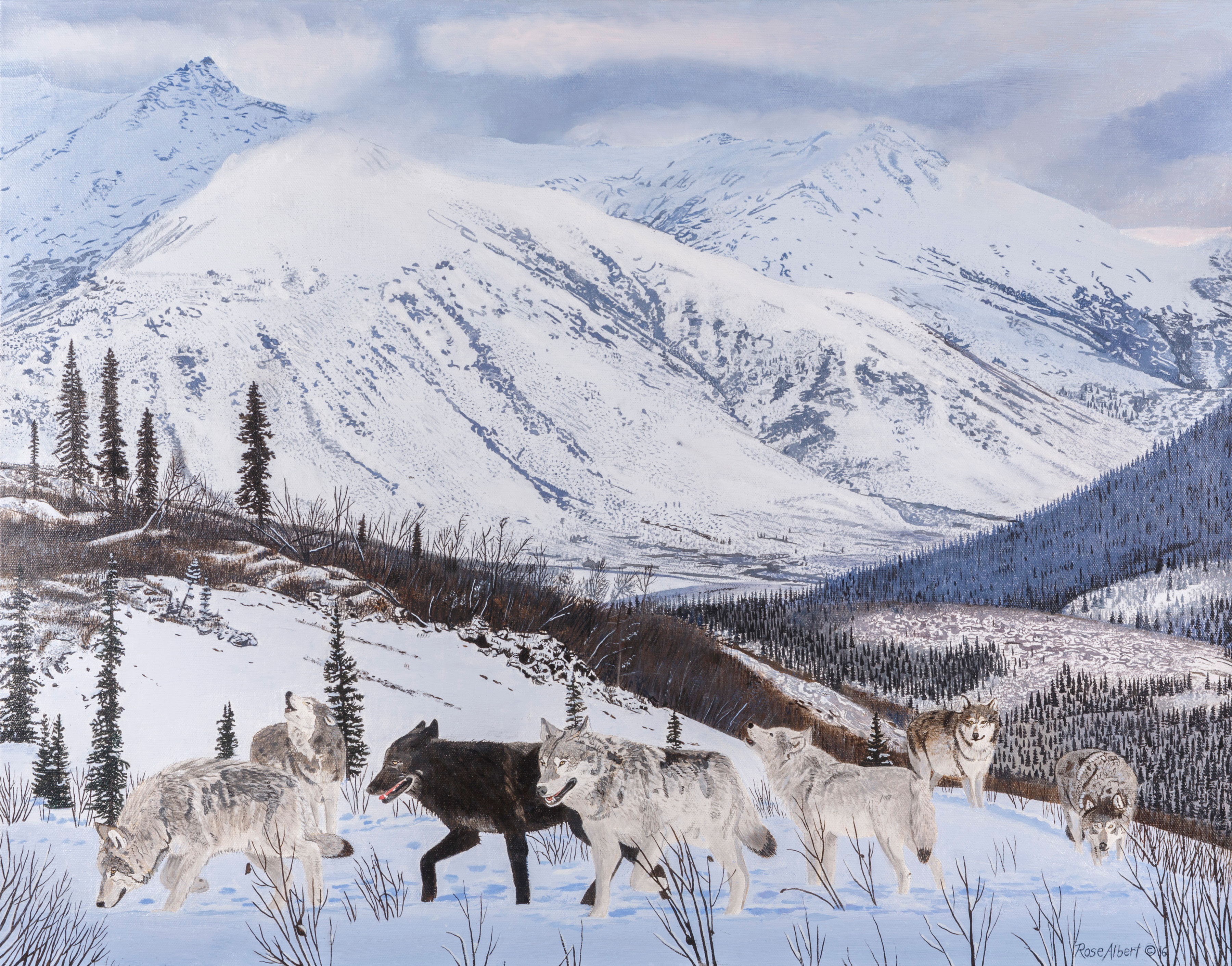
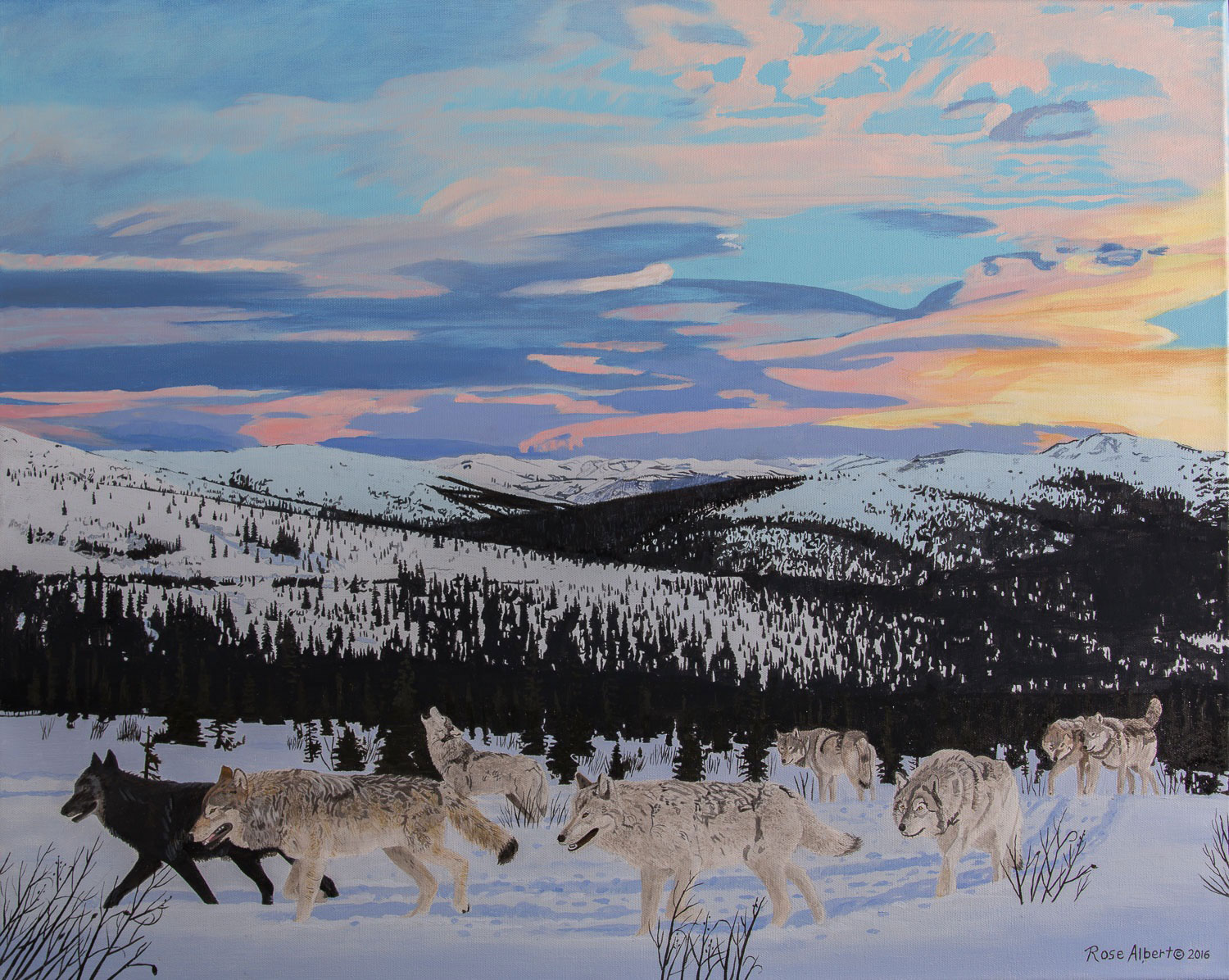
To see more of Rose Albert’s paintings, cedar boxes, and jewelry, Google “Rose Albert Nowitna River Studios Anchorage Alaska,” or visit her Facebook page. For inquiries about purchasing a painting or canvas print, email [email protected].






